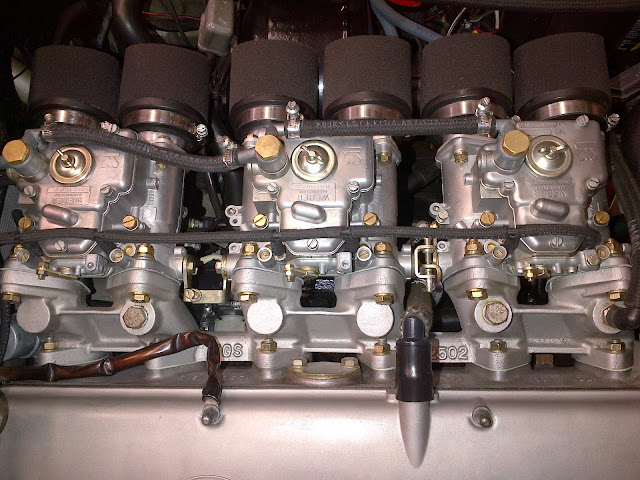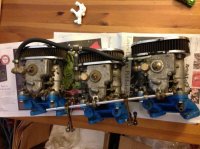1) the cooling system bypass... run a bypass from the thermostat, to a tee that runs to the heater and coolant tank?
You need the hoses and tee from an '84-'89 e24:
2) the 90 degree plenum bends have balancing ports.. I will need to manufacture a manifold to pick each of these location up.. however from photos I have seen.. there is a fourth outlet on the manifold that goes to where??
Post some pics
3) I have picked up the vacuum line for the brake booster on the third intake manifold... however where is most appropriate to pick up the distributor vacuum advance from?
Unless there are other manifold-side ports somewhere which for old Webers usually aren't, if you want to use manifold advance you can tee into the brake booster line then add an anti pulse valve from here:
http://www.dellorto.co.uk/merchandi...?PartNo=APV001&CategoryID=12&PartsectionID=71
4) what thickness should the rubber spacers be between the plenum and the 90" bends matting surface?
What do you mean by plenum? the front face of the carb or the airbox?
Also looking at your carb to intake manifold gaskets I would replace those with just a plain base gasket, not anti-vibration ones. They just leak and are not needed on a 6-cylinder.
5) from point four, what size are the plenum studs?
The carb to manifold studs are M8 and the trumpet to carb body are M6 but verify in your case
6) will the factory distributor be suffice for street use?
Yes if you use manifold vacuum for advanced idle, and tune for max advance with no pinging. Webers like early advance which stock distributors don't have. Many re-curve their stock distributor. I use a 123ignition programmable distributor and it is amazing.
7) with he factory E9 (this is an auto atm) did they have a auto choke? if so what to operate with the Webber 45's?
Like Jay said, there is no auto choke, only manual "cold start valves" which are not needed unless you live in a very cold climate. Most just remove them and blank them off so they don't leak air. There is no fast idle choke like on down draft webers so you have to manually keep the car idling higher until it is warmed up.
Cheers





